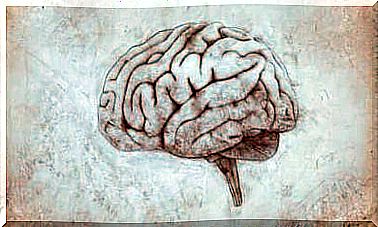Tourette’s Syndrome: A Rare Disease?

Tourette’s syndrome (Gilles de la Tourette’s syndrome) is a neurodevelopmental disorder. It is characterized by multiple motor and vocal tics that appear in childhood. These tics are often accompanied by behavioral changes.
This syndrome was originally described by the French physician George Gilles de la Tourette in 1885. For a long time it was treated as a rare disease. Then, it was shown that between 0.3 and 1% of students meet the diagnostic criteria for this disorder.
What is Tourette Syndrome?
The main feature of this syndrome is the chronic presence since childhood of at least two motor tics and one vocal tic. But what do we mean by “ticks”?
Tics are involuntary and repetitive gestures or movements that occur when one or more muscles in the body are contracted, usually in the face. What they have in common is that they are convulsive, inopportune and excessive movements. The distraction effect or the effort of will diminish this activity.

Tourette’s syndrome affects all races and ethnicities, both children and adults, despite the average age of onset being 6 years. Furthermore, this syndrome is four times more common in men than in women.
Tics in Tourette’s syndrome
As we were saying, in Tourette’s syndrome two types of tics are manifested: motor tics and vocal tics. Motor tics usually precede vocal tics. Also, the onset of simple tics often predates complex tics.
Examples of simple tics would be eye blinking, facial grimacing, shrugging, neck stretching and abdominal contractions. Vocal tics consist of sniffing, grunting and spitting.
Both simple tics and complex tics are preceded by a feeling of increasing internal tension. This tension is temporarily relieved by the expression of the tic. These sensations of tension known as “premonitory impulses” are characteristic of tics, and allow us to differentiate Tourette’s syndrome from other hyperkinetic movement disorders.
Patients arrive at the appointment with tics of different intensities. They may come to the office with mild syndromes that often go unnoticed, or with loud and energetic noises that can even cause injuries.
Diagnosing Tourette’s Syndrome
The diagnosis of this pathology is clinical, and depends on observation and clinical history. The diagnostic criteria for Tourette syndrome are as follows:
- At least two motor tics and one vocal (not necessarily simultaneous).
- Presence of tics for at least 12 months.
- Age of onset before 18 years old.
- Tics are not caused by the physiological effects of substances (eg, stimulants) or by other illnesses (eg, Huntington’s disease).
It is not uncommon for patients to be officially diagnosed with Tourette’s syndrome only after they have had symptoms for a long time. This has many reasons.
For family members and physicians who are not familiar with Tourette’s syndrome, symptoms such as mild and even moderate tics may be considered irrelevant. For example, some parents may think that eye blinks are related to eye problems, or that children smell the environment from allergies in certain seasons. Some patients are able to self-diagnose after they, their parents, relatives or friends, read or listen to some information about Tourette syndrome.

What are the causes of Tourette syndrome?
Little is known about the brain mechanisms associated with tics. Preliminary evidence from neurochemical and neuroimaging research suggests a dysfunction of dopaminergic pathways within the cortical-striatum-thalamus-cortical circuit.
Neurological studies of patients with Tourette syndrome have also provided evidence of deficiencies in brain maturation. In this sense, it was detected that neurons in the striatum migrate to other areas. Likewise, genetic predisposition is important for the onset of the syndrome. It is a genetically heterogeneous disorder.
On the other hand, data from epidemiological and laboratory studies have drawn attention to the importance of environmental factors. These factors refer to infections and autoimmune diseases, as well as prenatal and perinatal problems.
Tourette’s syndrome in cinema
Tourette’s syndrome has been present on our television and movie screens. There are many films that publicized this disease and made it its main theme.
In the film ‘Os Vigaristas’ (2003), the character played by Nicolas Cage suffers from this syndrome. The film tells the story of two poor thieves who sell water filters.
The protagonist of the film ‘Dirty Filthy Love’ (2004), played by Martin Sheen, also suffers from this disease. It tells the life of a man who falls apart as a result of his obsessive-compulsive disorder and Tourette’s syndrome.
The film ‘The First Class’ (2008) is also articulated around this syndrome. The protagonist follows in the footsteps of a teacher who cannot find work because he suffers from this condition.
Because tic symptoms do not always lead to disability, most people with Tourette’s syndrome do not need medication to control them. However, there are effective medications for those people whose symptoms interfere with their daily performance.









